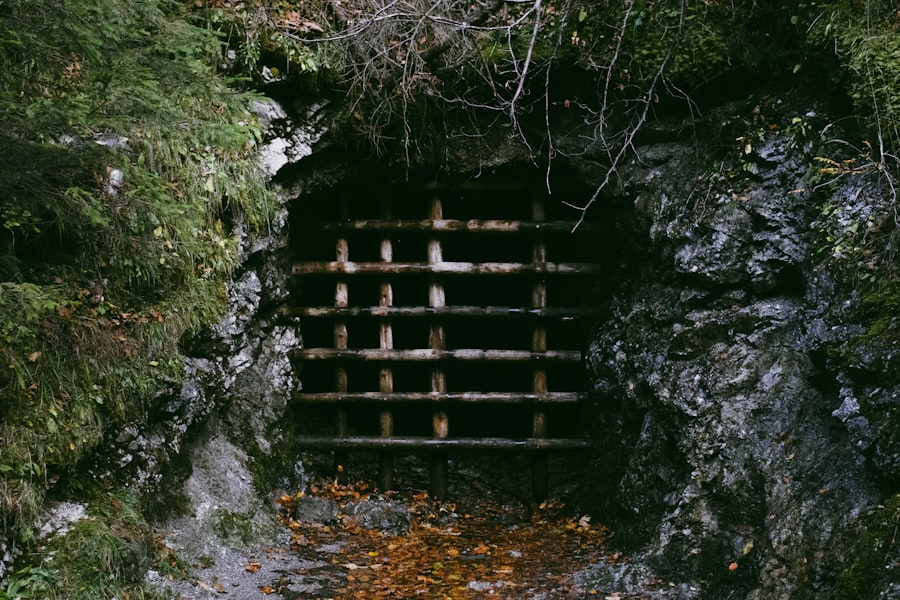The Drake Passage, a body of water that separates South America from Antarctica, is renowned for its tumultuous seas and unpredictable weather. Named after the English explorer Sir Francis Drake, who navigated these waters in the late 16th century, the passage has become a significant route for maritime travel and exploration. Stretching approximately 600 kilometers (370 miles) between Cape Horn and the Antarctic Peninsula, it is often regarded as one of the most challenging maritime routes in the world.
The Drake Passage serves not only as a vital link for vessels traveling to and from Antarctica but also as a gateway to some of the planet’s most remote and pristine environments. For adventurers and researchers alike, the Drake Passage represents both a formidable challenge and an extraordinary opportunity. The waters are teeming with marine life, and the surrounding landscapes are breathtakingly beautiful, offering glimpses of icebergs, glaciers, and unique wildlife.
However, the passage is not for the faint of heart; its reputation for rough seas and sudden storms has made it a subject of fascination and trepidation for sailors and travelers throughout history. As one embarks on a journey through this iconic waterway, they are not merely crossing a geographical boundary but are also stepping into a realm steeped in adventure and discovery.
Key Takeaways
- The Drake Passage is a treacherous body of water located between South America’s Cape Horn and the South Shetland Islands of Antarctica.
- The geography and weather patterns of the Drake Passage are characterized by strong winds, rough seas, and unpredictable conditions due to the convergence of the Atlantic, Pacific, and Southern oceans.
- The Drake Passage holds historical significance as a route for early explorers and has been the site of many expeditions, including those of Sir Francis Drake and Charles Darwin.
- Navigating the Drake Passage poses challenges and dangers such as extreme weather, icebergs, and strong currents, making it one of the most challenging maritime routes in the world.
- Preparing for a journey through the Drake Passage involves choosing the right vessel, packing appropriate gear, and being mentally and physically prepared for the harsh conditions.
Understanding the geography and weather patterns of the Drake Passage
The geography of the Drake Passage is characterized by its deep waters and complex ocean currents. The passage connects the Atlantic and Pacific Oceans, creating a unique confluence of marine ecosystems. The underwater topography features deep trenches and ridges, which contribute to the turbulent conditions often experienced by vessels traversing these waters.
The passage is also influenced by the Antarctic Circumpolar Current, which flows from west to east around Antarctica, further complicating navigation. Weather patterns in the Drake Passage are notoriously unpredictable. The region is known for its rapidly changing conditions, with calm seas quickly transforming into violent storms.
The convergence of cold polar air from Antarctica and warmer air from the north creates a volatile atmosphere that can lead to high winds and towering waves. Sailors must be prepared for sudden shifts in weather, as conditions can change within minutes. Understanding these geographical and meteorological factors is crucial for anyone planning to navigate this challenging waterway.
Historical significance and exploration of the Drake Passage

The historical significance of the Drake Passage cannot be overstated. It has been a critical route for explorers, scientists, and adventurers since the Age of Exploration. Sir Francis Drake’s circumnavigation of the globe in the late 1500s marked one of the first recorded passages through these waters, paving the way for future exploration of Antarctica.
His journey not only demonstrated the navigational challenges posed by the passage but also highlighted its potential as a route for trade and exploration. In subsequent centuries, numerous expeditions have ventured into the Drake Passage, each contributing to our understanding of this remote region.
Their journeys have become legendary, inspiring countless others to follow in their footsteps. The passage has also played a crucial role in scientific research, providing access to unique ecosystems and contributing to our knowledge of climate change and marine biology.
Challenges and dangers of navigating the Drake Passage
| Challenges and Dangers of Navigating the Drake Passage |
|---|
| Rough seas and strong winds |
| Potential for icebergs and ice floes |
| Narrow and unpredictable navigational route |
| Isolation and limited access to assistance |
| Extreme weather conditions |
| Potential for seasickness and motion discomfort |
Navigating the Drake Passage presents numerous challenges that can test even the most experienced sailors. The combination of strong currents, unpredictable weather, and rough seas creates an environment that demands respect and caution. One of the most significant dangers is the potential for rogue waves—massive waves that can appear suddenly and without warning.
These waves can reach heights of over 30 meters (100 feet), posing a serious threat to vessels caught in their path. In addition to rogue waves, sailors must contend with icebergs and floating debris that can be hazardous to navigation. The presence of icebergs is particularly concerning during certain times of the year when they break off from glaciers in Antarctica and drift northward into shipping lanes.
Collisions with these massive ice formations can result in catastrophic damage to vessels. Furthermore, the isolation of the Drake Passage means that assistance may be far away in case of an emergency, making thorough preparation essential for anyone attempting to cross this formidable stretch of water.
Tips for preparing for a journey through the Drake Passage
Preparation is key when embarking on a journey through the Drake Passage. Travelers should begin by researching their route and understanding the specific challenges they may face during their crossing. It is advisable to consult with experienced sailors or tour operators who specialize in Antarctic voyages, as they can provide valuable insights into navigating these waters safely.
Packing appropriately is also crucial for a successful journey. Given the unpredictable weather conditions, travelers should bring layers of clothing that can be adjusted according to changing temperatures. Waterproof gear is essential, as splashes from waves can drench passengers at any moment.
Additionally, travelers should ensure they have all necessary safety equipment on board, including life jackets, flares, and communication devices. Being well-prepared can make all the difference in ensuring a safe and enjoyable experience while crossing this iconic passage.
Choosing the right vessel for crossing the Drake Passage

Selecting the appropriate vessel for crossing the Drake Passage is a critical decision that can significantly impact the overall experience. Various types of ships are designed specifically for navigating these challenging waters, each offering different levels of comfort and safety features. Ice-strengthened vessels are particularly important for those planning to explore areas near Antarctica, as they are built to withstand icy conditions and potential collisions with icebergs.
Travelers should also consider factors such as size and stability when choosing a vessel. Smaller ships may provide a more intimate experience but can be more susceptible to rough seas compared to larger vessels designed for open ocean travel. Additionally, amenities such as onboard medical facilities and experienced crew members can enhance safety during the crossing.
Ultimately, selecting a vessel that aligns with one’s comfort level and adventure goals is essential for a successful journey through the Drake Passage.
Safety measures and precautions for navigating the Drake Passage
Safety should always be a top priority when navigating the Drake Passage. Mariners must adhere to strict safety protocols to minimize risks associated with rough seas and unpredictable weather conditions. Regular communication with other vessels in the area is essential for sharing information about current conditions and potential hazards.
Before setting sail, it is crucial to conduct thorough safety drills with all crew members and passengers on board. Familiarizing everyone with emergency procedures can help ensure a swift response in case of an unexpected situation. Additionally, maintaining an updated weather forecast is vital for making informed decisions about when to navigate through the passage.
By taking these precautions seriously, sailors can significantly reduce risks while enjoying their adventure across this remarkable waterway.
Wildlife and natural wonders of the Drake Passage
The Drake Passage is not only known for its challenging navigation but also for its rich biodiversity and stunning natural wonders. The waters are home to an array of marine life, including whales, seals, and various species of fish. Among these creatures, humpback whales are often spotted during their migration between feeding grounds in Antarctica and breeding grounds further north.
In addition to marine life, seabirds such as albatrosses and petrels can frequently be seen soaring above the waves. These magnificent birds are adapted to life at sea and often follow ships for miles in search of food scraps. The breathtaking landscapes surrounding the passage also captivate travelers; towering icebergs glisten in shades of blue and white against the backdrop of rugged mountains on both sides of the waterway.
For nature enthusiasts, crossing the Drake Passage offers an unparalleled opportunity to witness some of Earth’s most awe-inspiring sights.
Strategies for coping with seasickness during the crossing
Seasickness is a common concern for many travelers embarking on a journey through the Drake Passage. The unpredictable nature of the waters can lead to discomfort for even seasoned sailors. However, there are several strategies that individuals can employ to mitigate symptoms associated with motion sickness.
One effective approach is to choose accommodations on lower decks or midship areas of the vessel where motion is less pronounced. Additionally, travelers may benefit from over-the-counter medications designed to prevent seasickness or natural remedies such as ginger or acupressure bands. Staying hydrated and consuming light meals before setting sail can also help alleviate nausea during rough crossings.
By taking proactive measures, individuals can enhance their comfort levels while navigating this challenging passage.
Stories and experiences of those who have crossed the Drake Passage
The stories of those who have crossed the Drake Passage are often filled with adventure, camaraderie, and unforgettable moments. Many travelers recount their experiences with awe as they navigate through turbulent waters while marveling at breathtaking landscapes. Some share tales of encountering majestic whales breaching nearby or witnessing stunning sunsets over icy horizons.
Others speak candidly about their struggles with seasickness or moments of fear during particularly rough patches of water. These shared experiences foster a sense of community among travelers who bond over their mutual challenges and triumphs during their journey through this iconic passage. Each story adds to the rich tapestry of human exploration in one of Earth’s most remote regions.
The unforgettable adventure of navigating the Drake Passage
Navigating the Drake Passage is an adventure that leaves an indelible mark on those who undertake it. From its historical significance as a route for explorers to its breathtaking natural beauty teeming with wildlife, this body of water offers an experience unlike any other. While challenges abound—ranging from unpredictable weather patterns to potential seasickness—the rewards are equally profound.
For many travelers, crossing the Drake Passage becomes a rite of passage that symbolizes resilience and discovery. It serves as a reminder of humanity’s enduring spirit in exploring even the most daunting frontiers on Earth. As they reflect on their journey through these storied waters, adventurers carry with them not only memories but also a deeper appreciation for nature’s power and beauty—a testament to an unforgettable experience that will resonate long after they return home.
Drake Passage is a significant body of water that serves as a natural boundary between the southern tip of South America and Antarctica. It is renowned for its challenging navigation conditions and its role in global ocean circulation.
